PROTECT YOUR DNA WITH QUANTUM TECHNOLOGY
Orgo-Life the new way to the future Advertising by AdpathwayPattypan squash has a similar taste and texture to other types of summer squash, but it comes in a cute, round package. The flying saucer shapes are perfect for slicing into rounds and grilling, but they also work well when sautéed and roasted.
Growing pattypan squash is similar to growing zucchini, crookneck squash, and other similar cucurbits. They need lots of sun, warm temperatures, and the necessary nutrients. If all goes well, you’ll enjoy multiple weeks of these round summer squash.
If you’re not sure how to care for summer squash, let alone pattypan squash, don’t worry. I’ll cover all you need to know about how to care for these unique vegetables.
Gelber Englischer Summer (Patty Pan) Squash

Gelber Englischer Summer (Patty Pan) Squash Seeds
Scallop Blend Summer (Patty Pan) Squash

Scallop Blend Summer (Patty Pan) Squash Seeds
Round Zucchini Summer Squash

Round Zucchini Summer Squash Seeds
Pattypan Squash Overview
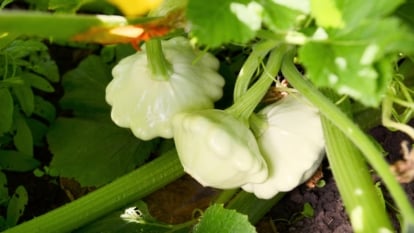
|
Plant Type Annual Family Cucurbitaceae Genus Cucurbita Species pepo |
Native Area North and Central America Exposure Full sun Height 2-3 feet Watering Requirements Moderate |
Pests & Diseases Squash bugs, squash vine borer, pickleworms, downy mildew, bacterial wilt Maintenance Low to moderate Soil Type Rich and well-draining Hardiness Zone 4-10 |
What Is Pattypan Squash?
Pattypan squash is a type of summer squash that’s best eaten young. Although the edible portions of the plant are botanically fruits, they’re referred to as vegetables.
The pattypan is the same species as zucchini and crookneck squash, but it has its own subspecies: clypeata. Like all types of summer squash, it thrives in the warm summer months.
Characteristics
 Healthy pattypan squash plants can grow over four feet wide.
Healthy pattypan squash plants can grow over four feet wide. Pattypan squash grows as a large, branching plant that resembles other types of summer squash. The plants produce large leaves that appear at the end of long, hollow stems. Although squash starts out small, healthy plants can grow over four feet wide.
The plants begin producing large, golden flowers a little over a month after planting. They contain both male and female flowers, and only the female blooms will turn into fruit. The squash has a flattened, round shape with stunning scalloped edges. Some people say it looks like a strange spacecraft, hence the nickname UFO or flying saucer squash.
You can find numerous varieties of pattypan squash that vary in color. Pale yellow, light green, and a combination of bright yellow and green are some popular options.
Native Area
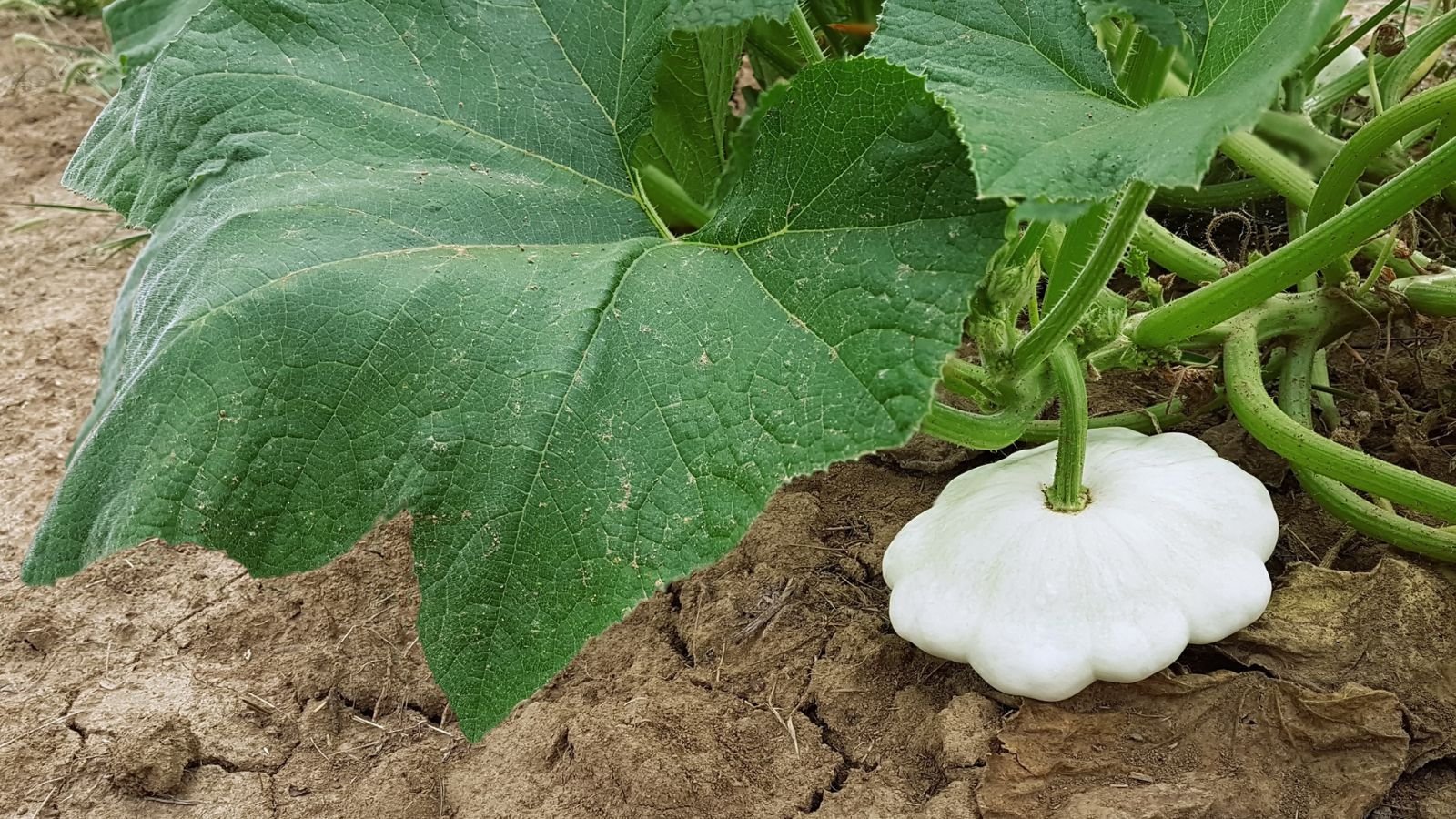 This species originated in Mexico.
This species originated in Mexico. Cucurbita pepo, the species that contains the pattypan squash, emerged in Mexico. Indigenous people found the plants growing wild and began domesticating them thousands of years ago. Researchers believe the plants were domesticated close to 10,000 years ago, making them one of the oldest tended crops.
While the general Cucurbita pepo species has been grown by humans for thousands of years, not all of the varieties within this species are this old. It’s believed that pumpkins and gourds were grown first, and summer squash like the pattypan were developed later.
Planting
You can plant pattypan squash from seeds or transplants, and both work well in most cases. Here’s how to follow each method.
Starting Seeds Indoors
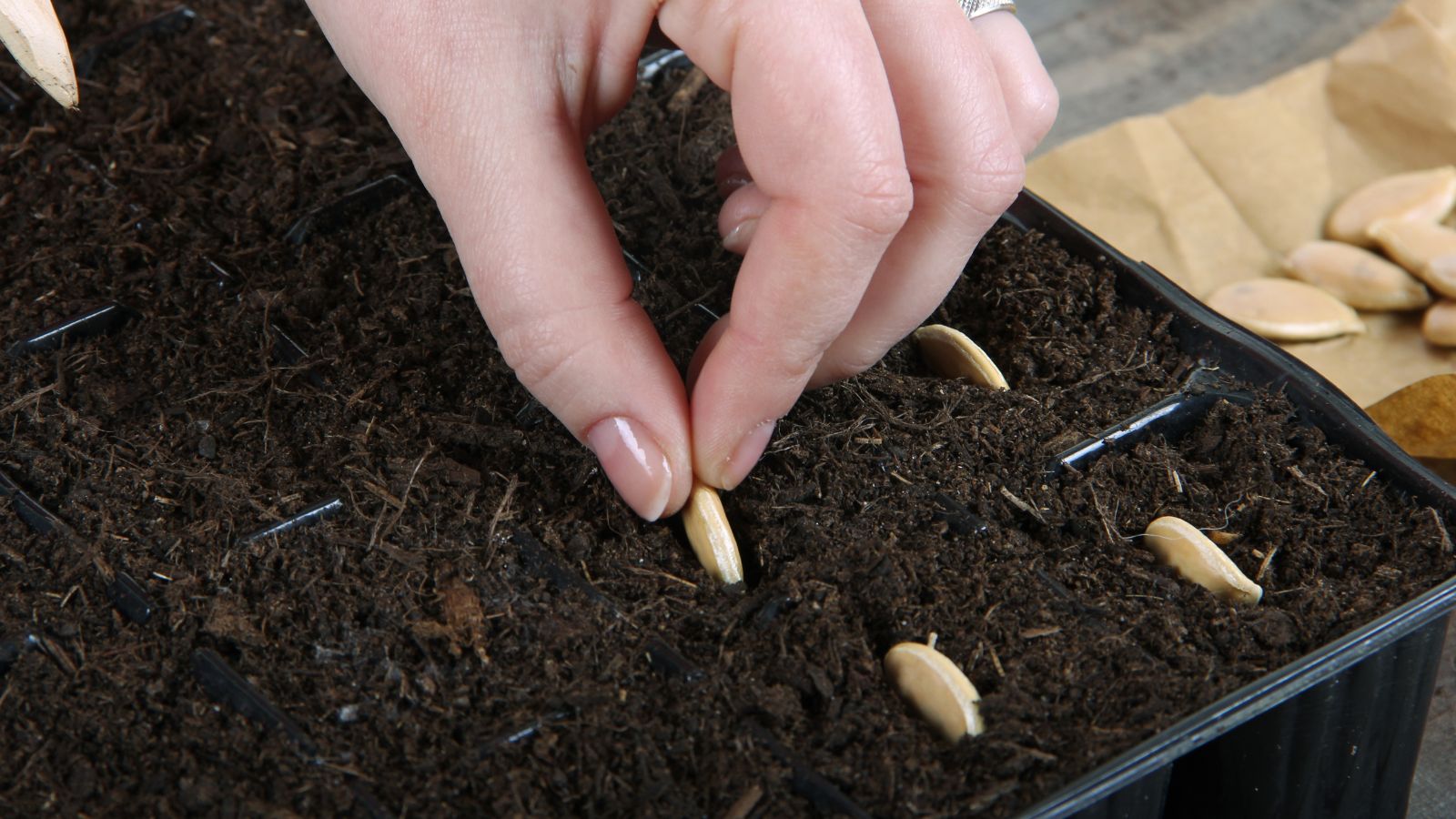 Sow seeds indoors if you’d like an earlier harvest.
Sow seeds indoors if you’d like an earlier harvest. Starting seeds indoors isn’t necessary in most areas, but it does allow you to enjoy squash earlier in the year. If you want to grow your seeds in pots and later transplant them, remember that these plants grow quickly. Plant them no more than four weeks before you plan to plant them outdoors.
Since Pattypan squash plants are sensitive to cold, you should wait until after your last frost to plant them outdoors. Planting two weeks after your average last frost date is typically a safe bet.
When you have your planting date set, you can begin sowing your seeds. Start with large cell trays or small pots and fill them with a well-draining soil mix that’s high in organic matter. Poke a half-inch deep hole in each cell, place a seed, and cover. You can plant two seeds per cell if you’re worried about the germination rate.
These seeds germinate best when the soil is between 70–85°F (21-29°C), so use a heat mat if you’re starting them in a cool space. The seedlings should emerge within a week if the soil stays warm and moist. Move the plants to an area with at least ten hours of bright light, or use a grow light if you don’t have a well-lit location.
Keep the soil slightly moist as the plants mature and raise grow lights as necessary. The plants are ready to head outdoors once they have at least two true leaves. Rather than moving plants straight from indoors to the garden, harden them off to acclimate them to their new environment. This will limit transplant shock and lead to healthy plants.
Direct Sowing
 Prepare your soil, then direct sow.
Prepare your soil, then direct sow. Another option is to direct sow pattypan squash seeds in the garden. This method works great, unless you want to harvest your squash as early as possible.
If you want to direct sow, prepare the soil before planting. I’ll cover this in more detail below. Dig a small hole, about half an inch deep, then place a seed and cover it. Be sure to leave at least two feet of space between your squash and other plants.
How to Grow Pattypan Squash
Pattypan squash is simple to grow as long as you provide the plants with the proper water and nutrition. Here are the best care practices to follow to end up with healthy plants that produce lots of squash.
Light
 Cucurbits prefer full sun.
Cucurbits prefer full sun. Full sun produces the healthiest pattypan plants. A few hours of morning or afternoon shade isn’t a dealbreaker, but you should provide as much light as possible.
Water
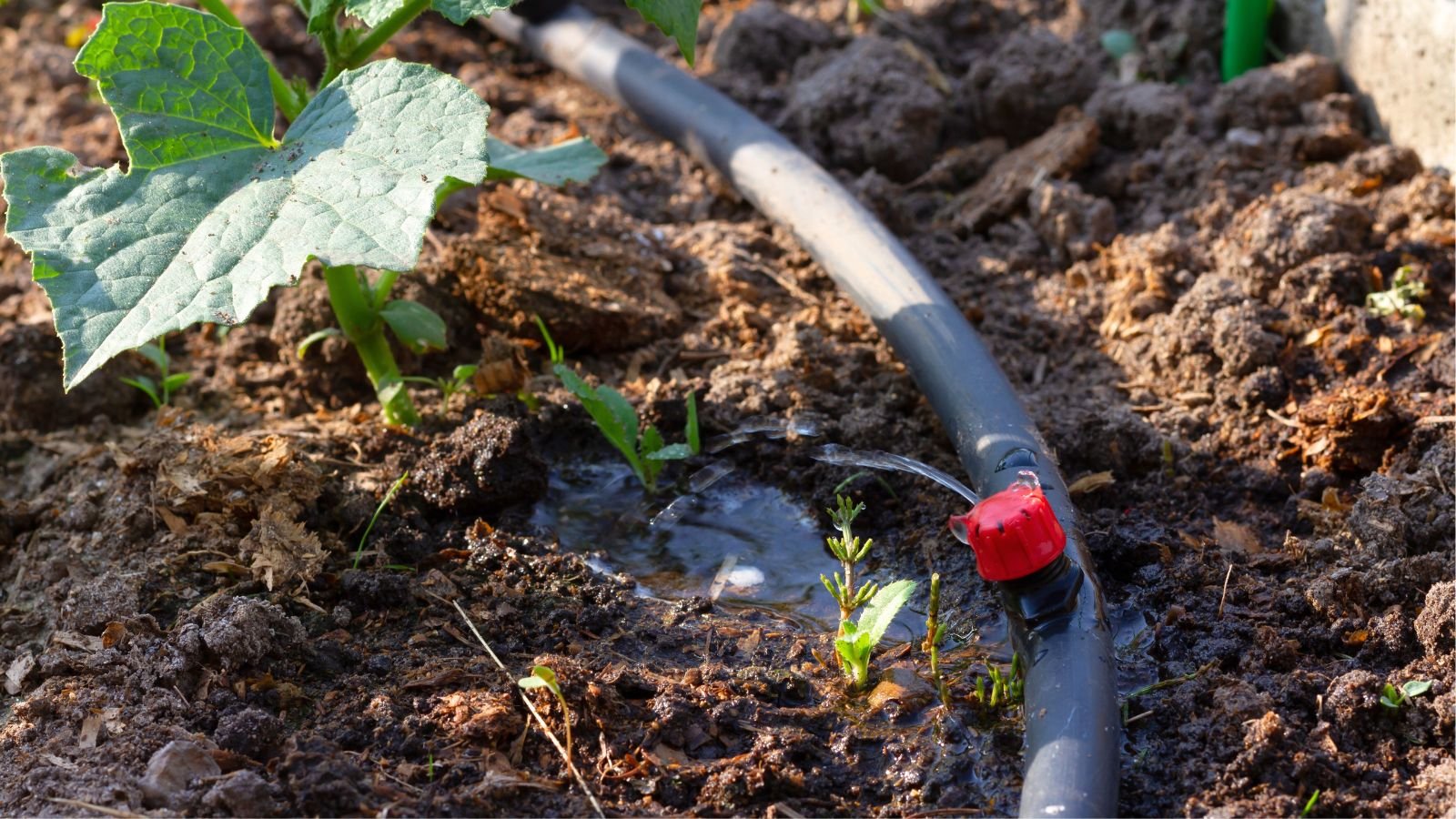 Drip irrigation helps minimize potential for fungal diseases.
Drip irrigation helps minimize potential for fungal diseases. These plants require lots of water to grow their large leaves and produce healthy fruit. Adding one to three inches of water per week during dry periods will keep them healthy.
Since pattypan foliage is prone to numerous fungal diseases, drip irrigation is the best watering method. You can install a drip irrigation system using headers and drip tape or lay a soaker hose near the base of your plants. Always water the base of your plants when using a hose or watering can.
Soil
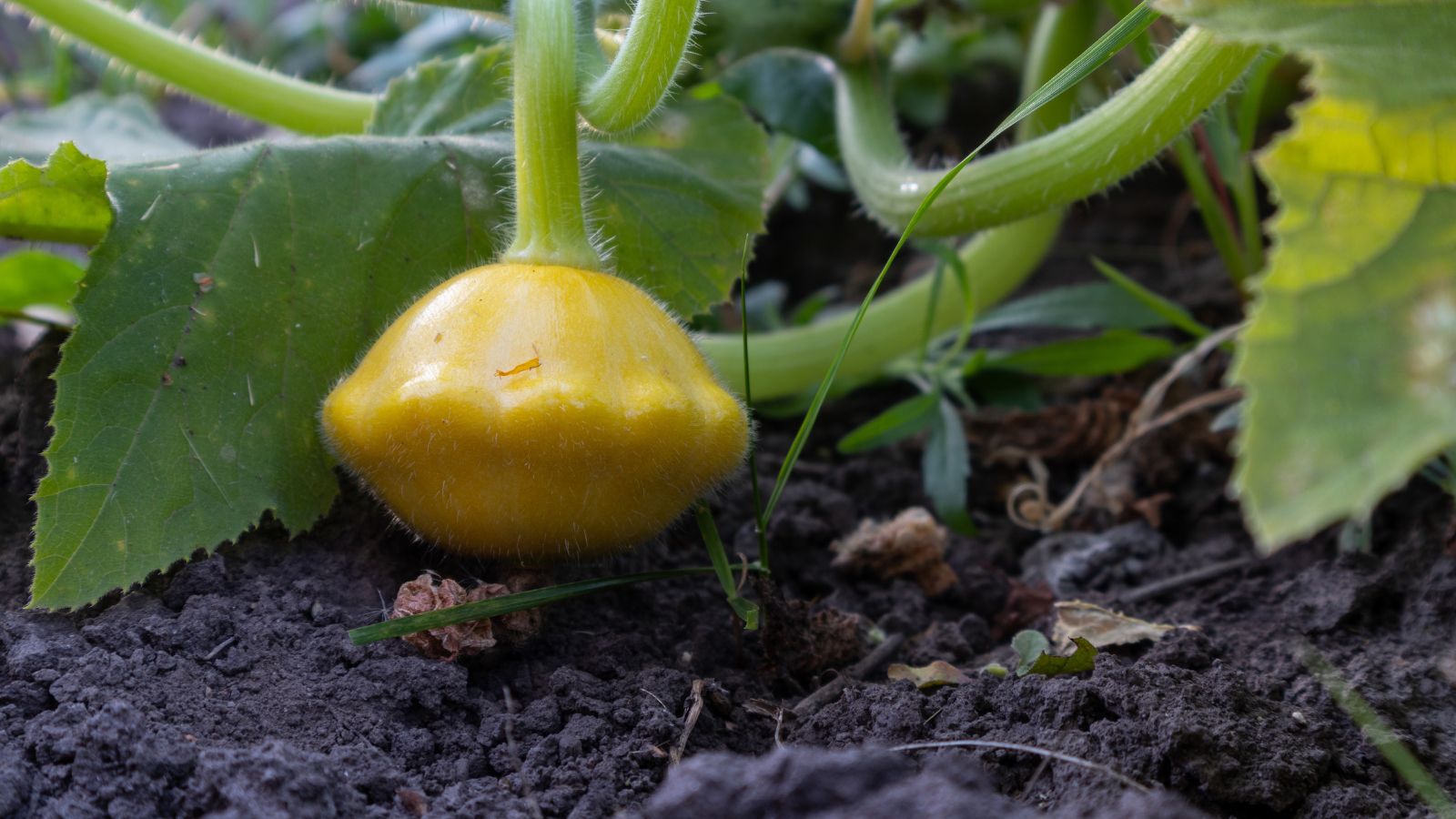 Add compost before planting.
Add compost before planting. Have you ever noticed how volunteer squash plants that grow out of the compost pile are some of the healthiest plants in your garden? Well, it turns out that pattypan squash love organic matter.
Adding a few generous scoops of compost to your garden bed before planting will help keep your squash plants happy. Good drainage is also key, so loosen the soil with a digging fork if it seems compacted. The pH should be between 5.5 and 6.5, so test the soil and adjust as necessary.
Temperature and Humidity
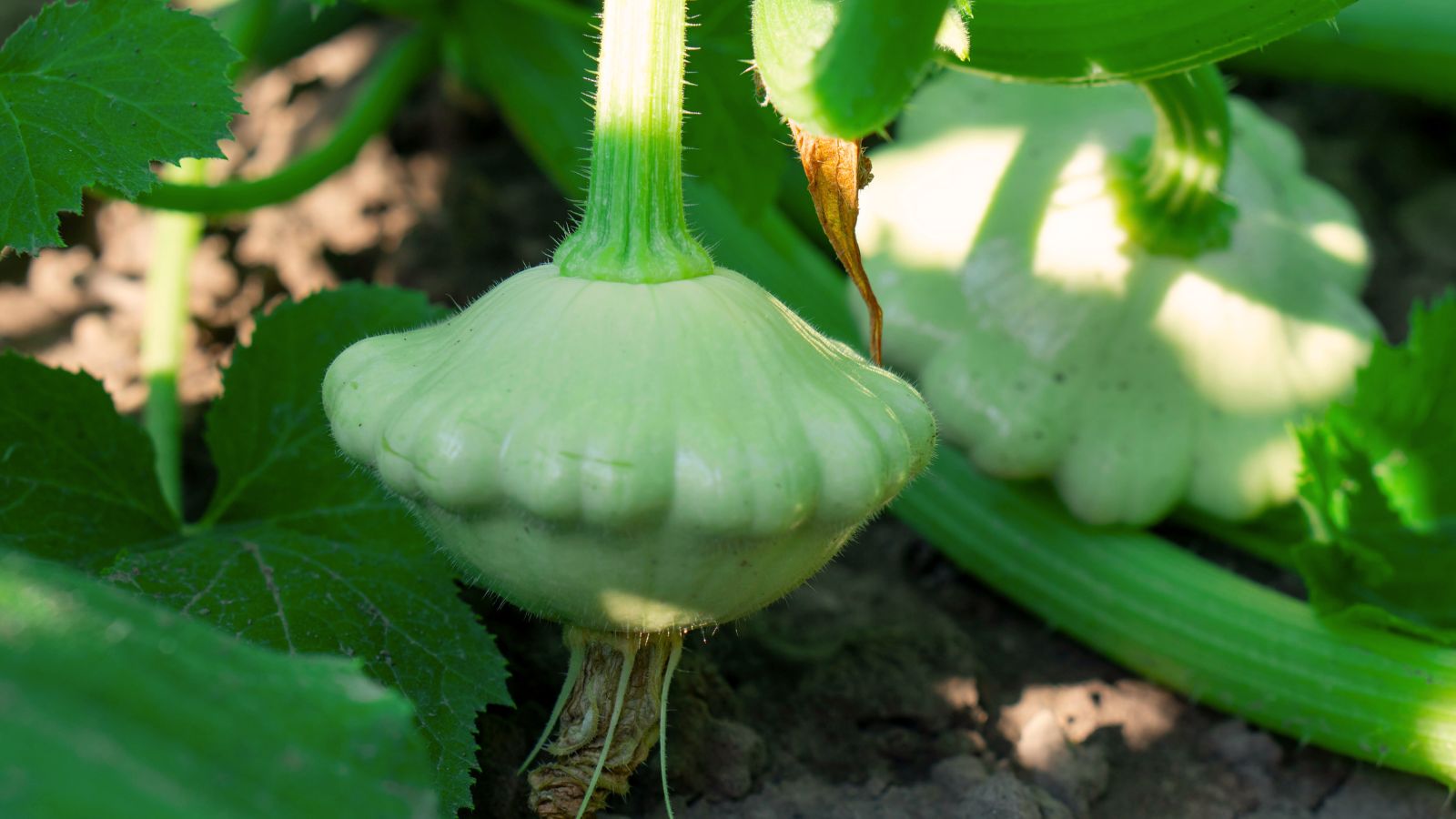 Plant after your last spring frost.
Plant after your last spring frost. Pattypan squash requires warm temperatures to grow well. Avoid planting them outdoors before your last spring frost, and wait until nighttime temperatures are consistently above 50°F (10°C).
Humidity isn’t a big deal for these plants, but it will increase the likelihood of fungal diseases. So, if you live in a humid area, do all you can to provide good airflow around the plants.
Fertilizing
 To boost soil nutrients, consider a balanced granular fertilizer before planting.
To boost soil nutrients, consider a balanced granular fertilizer before planting. These squash benefit from a moderate amount of nutrients and they love organic matter. Mixing high-quality compost into the soil before planting will add beneficial soil microbes to the soil and while also providing a home for microbes that are already present.
Healthy soils may not require any fertilizing additions throughout the growing season. If you feel your soil is lacking nutrients, apply a balanced granular fertilizer before you plant. You can also supplement with fish fertilizer throughout the growing season.
Maintenance
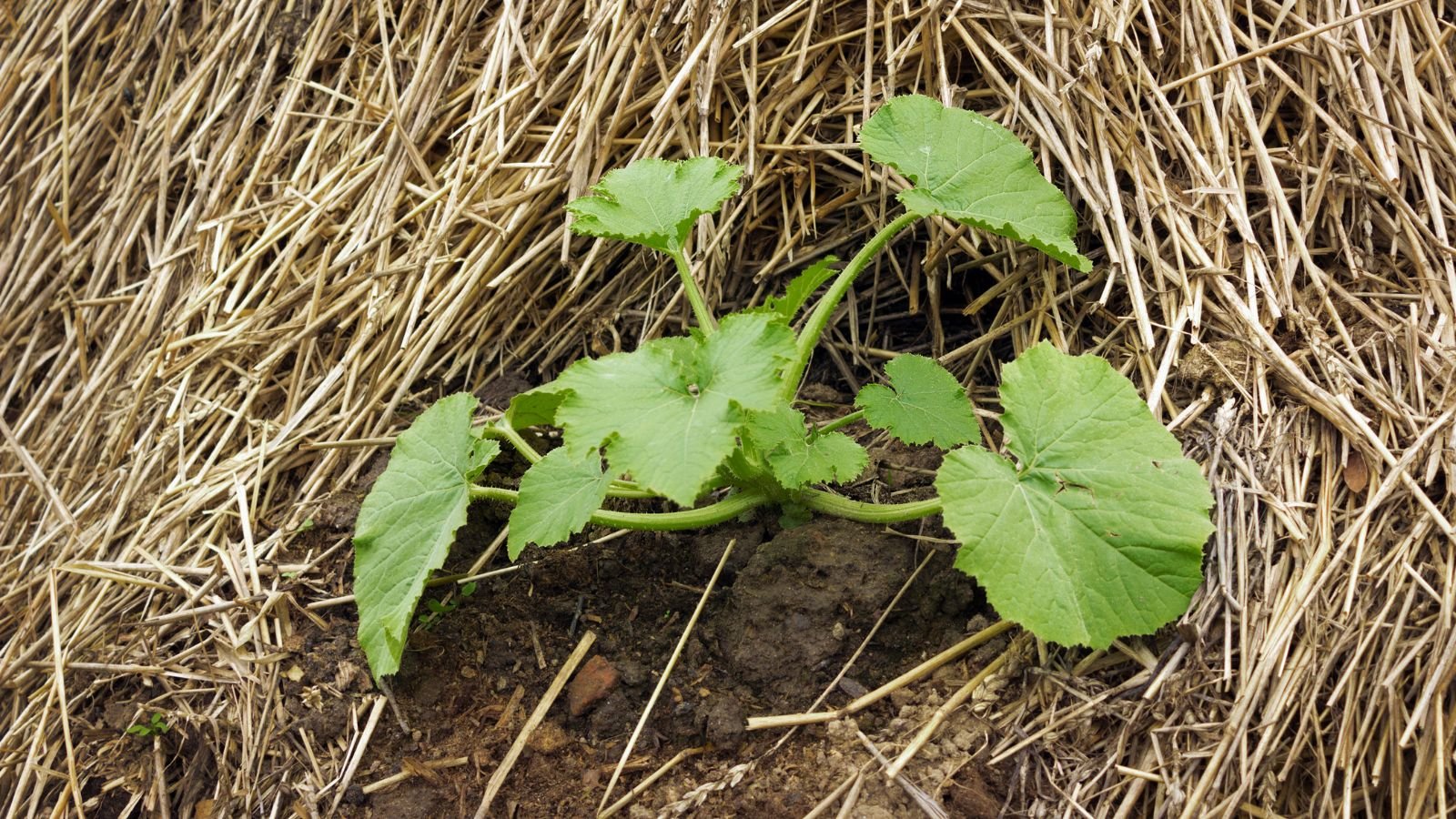 Mulch around the plant’s base to prevent weeds and a barrier under fruits.
Mulch around the plant’s base to prevent weeds and a barrier under fruits. Expect to spend little time maintaining these plants. Mulching around their base while they’re young will limit weeds and prevent the fruits from sitting directly on the soil, but it isn’t necessary. If you don’t mulch, plant to spend time pulling weeds around young plants.
Pattypan plants rarely require pruning, but you can move any discolored or diseased leaves. This will help prevent diseases from spreading and allow for better airflow.
Harvesting and Storage
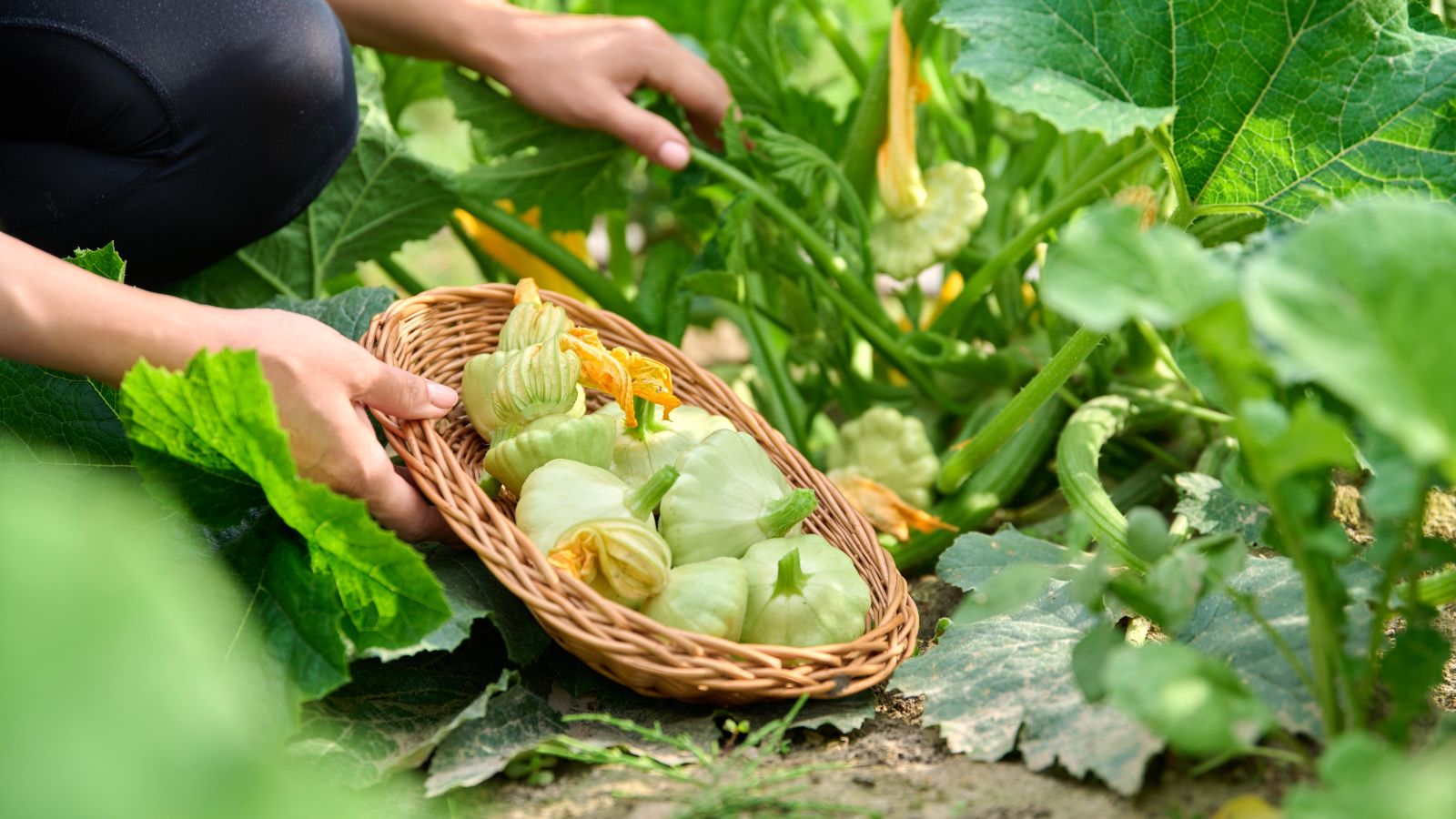 Harvest when fruit are about three inches in diameter.
Harvest when fruit are about three inches in diameter. Once pattypan begins producing fruits, expect an onslaught of the saucer-shaped squash. The plants produce lots of flowers, and the fruits mature quickly, so you can expect to harvest a squash every day or two.
You can harvest the fruits at any size, but most people find a good combination of flavor and storage life when they’re about three inches in diameter. Smaller squash won’t hold up well after they’re picked, and larger fruits have a less desirable flavor and texture.
Common Problems
Pattypan squash faces similar challenges as other summer squash plants. Watch out for these diseases and pests.
Squash Bugs
 Check for squash bugs and their eggs.
Check for squash bugs and their eggs. Squash bugs (Anasa tristis) are, unfortunately, common pests on all types of cucurbits, including pattypan squash. These brown, shield-shaped bugs suck plant sap, weakening the plants in the process. You may also see clusters of ovaluar bronze eggs or gray nymphs.
Excluding squash bugs from young plants is one of the best ways to protect them. Add wire hoops over the plants then cover them with a lightweight row cover or piece of insect netting. Remove the covering when you see the first flowers so pollinators can access the blooms.
Although squash bugs may still attack older pattypan plants, these large plants are better able to withstand damage. If you spot the adults or nymphs, you can squish them or spray them with neem oil. Check for the shiny bronze eggs on the undersides of the leaves and scrape them into soapy water to disturb the pests’ life cycle.
Squash Vine Borer
 Watch out for the larvae of the squash vine borer.
Watch out for the larvae of the squash vine borer. This hated pest can quickly destroy pattypan squash. The squash vine borer (Melittia cucurbitae) is actually a moth, but the larva is the form that causes damage.
The adults lay single eggs near the base of the base of the plants, and the larvae enter in the stem. They then feed on the inside of the stem, leading to a quick collapse of the entire plant. If your plant seemed to wilt in a day, a squash vine borer is likely to blame.
Like with squash bugs, you can physically exclude the adult moths with row cover. This method isn’t very useful for larger plants that are flowering and require insects for pollination and fruit set.
One way to prevent larval damage is to bury the stem so the pests can’t burrow into it. Be aware that the pests can still make their way into higher up portions of the stem.
Another control method involves removing the larvae after they make their way into the vine. Look for a small hole surrounded by sawdust-like frass that indicates a larva has penetrated. Make a small incision along the vine, then use a blade or needle to pluck the borer from the plant. Bury the cut portion of the stem to speed recovery.
Powdery Mildew
 Wet foliage increases risk of powdery mildew.
Wet foliage increases risk of powdery mildew. A fine, white substance covering your plants’ leaves indicates the fungal disease powdery mildew. This disease can be caused by numerous pathogens, but they all present with the same white coating.
Although powdery mildew won’t severely harm your plants directly, it will limit photosynthesis rates and lead to plant decline. Eventually, infected leaves may turn yellow or brown and fall from the plant.
Providing excellent air flow, avoiding overhead watering, providing the proper nutrients, and choosing resistant varieties can help prevent powdery mildew. You can treat early infections by spraying with Bacillus subtilis or neem oil.
Frequently Asked Questions
Healthy pattypan squash plants produce a new fruit every one to two days, and the squash grows faster in warm, sunny weather. The plants can continue producing for over a month, so you can expect over 20 squash from a single plant.
Yes! These are summer squash with tender, edible skin. No peeling is required.
No. These plants grow in a bush habit, so you don’t need to provide a trellis or any other type of support.


 1 month ago
17
1 month ago
17





















 English (US) ·
English (US) ·  French (CA) ·
French (CA) ·